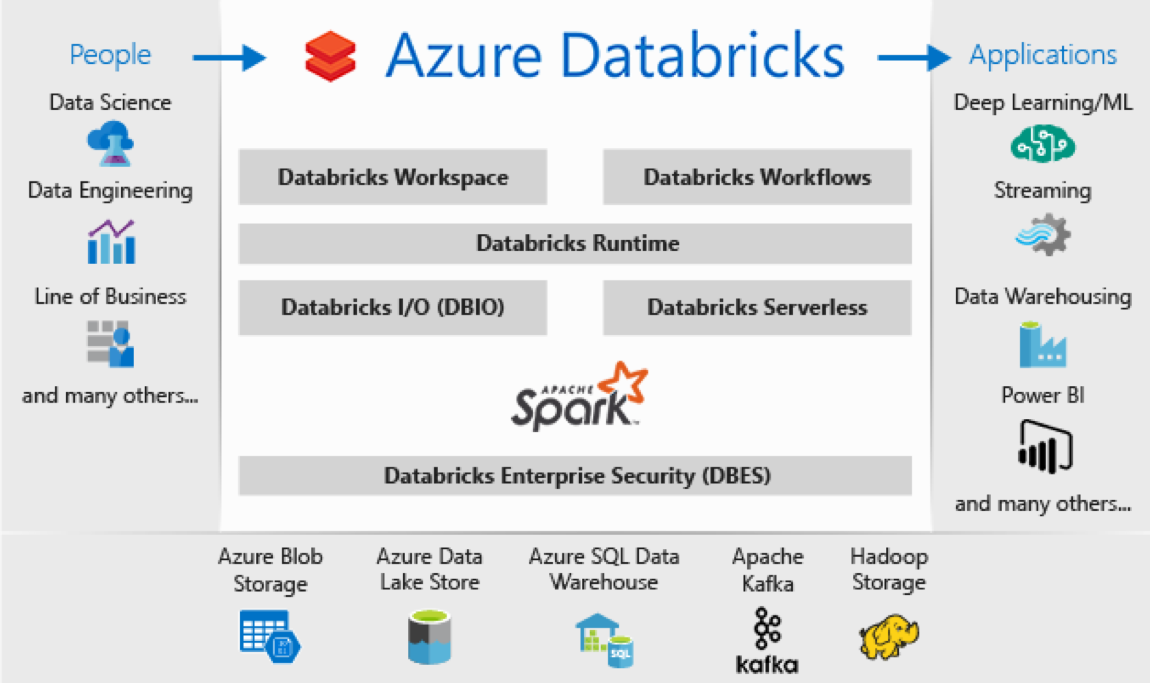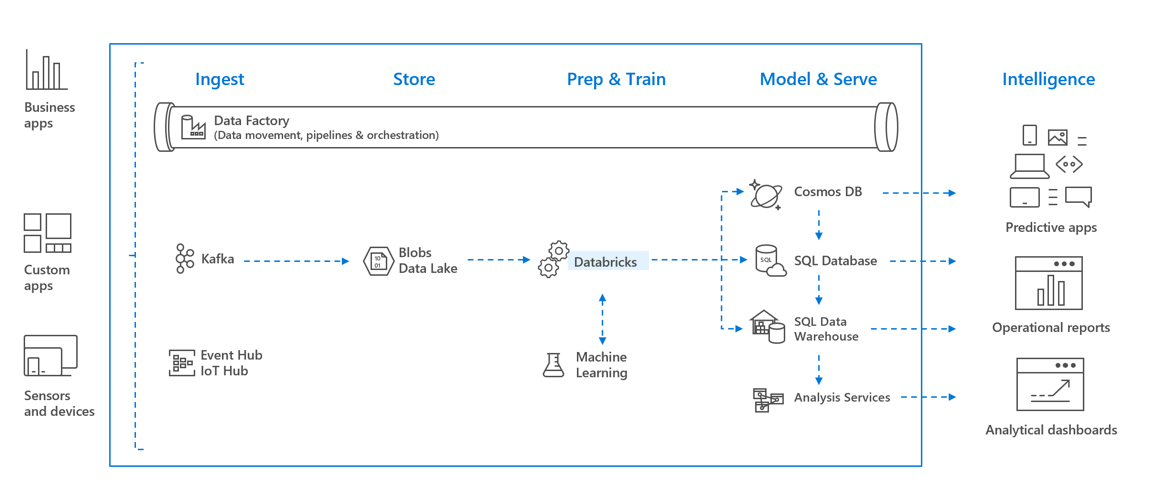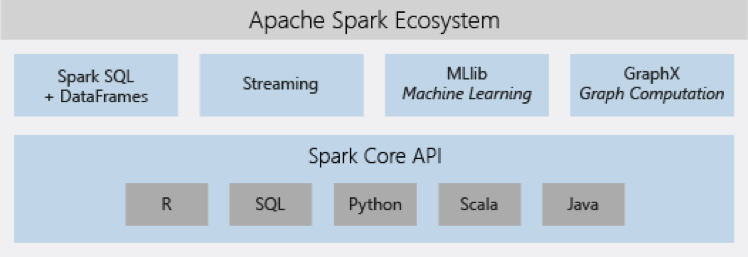What Azure services does Azure Databricks integrate?

Azure Databricks is a first-party service on Azure and unlike other clouds, it’s not an Azure Marketplace or a third-party hosted service. It integrates seamlessly with other Azure services such as:
Azure Storage Services
Directly access data in Azure Blob Storage and Azure Data Lake Store
Azure Billing
Simple, single billing
Azure SQL DW and Azure Cosmos DB
Enables you to combine structured and unstructured data for analytics
Apache Kafka for HDInsight
Service can be launched directly from Azure Portal
Azure Active Directory
For user authentication, eliminating the need to maintain two separate sets of uses in Databricks and Azure
Azure Power BI
For rich data visualization
How do Azure Databricks work?
For a big data pipeline, the data (raw or structured) is ingested into Azure through Azure Data Factory in batches, or streamed near real-time using Kafka, Event Hub, or IoT Hub. This data lands in a data lake for long term persisted storage, in Azure Blob Storage or Azure Data Lake Storage. As part of your analytics workflow, use Azure Databricks to read data from multiple data sources such as Azure Blog Storage, Azure Data Lake Storage, Azure Cosmos DB, or Azure SQL Data Warehouse and turn it into breakthrough insights using Spark.

About the Apache Spark-based Analytics Platform
Azure Databricks comprises the complete open-source Apache Spark cluster technologies and capabilities. Spark in Azure Databricks includes the following components:

Spark SQL and DataFrames: Spark SQL is the Spark module for working with structured data. A DataFrame is a distributed collection of data organized into named columns. It is conceptually equivalent to a table in a relational database or a data frame in R/Python.
Streaming: Real-time data processing and analysis for analytical and interactive applications. Integrates with HDFS, Flume, and Kafka.
MLib: Machine Learning library consisting of common learning algorithms and utilities, including classification, regression, clustering, collaborative filtering, dimensionality reduction, as well as underlying optimization primitives.
GraphX: Graphs and graph computation for a broad scope of use cases from cognitive analytics to data exploration.
Spark Core API: Includes support for R, SQL, Python, Scala, and Java.
Apache Spark
in Azure Databricks
Azure Databricks builds on the capabilities of Spark by providing a zero-management cloud platform that includes:
- Fully managed Spark clusters
- An interactive workspace for exploration and visualization
- A platform for powering your favorite Spark-based applications
Fully Managed
Apcache Spark Clusters in the Cloud
Azure Databricks has a secure and reliable production environment in the cloud, managed and supported by Spark experts. You can:
- Create clusters in seconds.
- Dynamically autoscale clusters up and down, including serverless clusters, and share them across teams.
- Use clusters programmatically by using the REST APIs.
- Use secure data integration capabilities built on top of Spark that enable you to unify your data without centralization.
- Get instant access to the latest Apache Spark features with each release.
Databricks Runtime
The Databricks Runtime is built on top of Apache Spark and is natively built for the Azure cloud. With the Serverless option, Azure Databricks completely abstracts out the infrastructure complexity and the need for specialized expertise to set up and configure your data infrastructure. The Serverless option helps data scientists iterate quickly as a team.
For data engineers, who care about the performance of production jobs, Azure Databricks provides a Spark engine that is faster and performant through various optimizations at the I/O layer and processing layer (Databricks I/O).
Workspace for Collaboration
Through a collaborative and integrated environment, Azure Databricks streamlines the process of exploring data, prototyping, and running data-driven applications in Spark.
- Determine how to use data with easy data exploration.
- Document your progress in notebooks in R, Python, Scala, or SQL.
- Visualize data in a few clicks, and use familiar tools like Matplotlib, ggplot, or d3.
- Use interactive dashboards to create dynamic reports.
- Use Spark and interact with the data simultaneously.
Enterprise Security
Azure Databricks provides enterprise-grade Azure security, including Azure Active Directory integration, role-based controls, and SLAs that protect your data and your business.
- Integration with Azure Active Directory enables you to run complete Azure-based solutions using Azure Databricks.
- Azure Databricks roles-based access enables fine-grained user permissions for notebooks, clusters, jobs, and data.
- Enterprise-grade SLAs.
